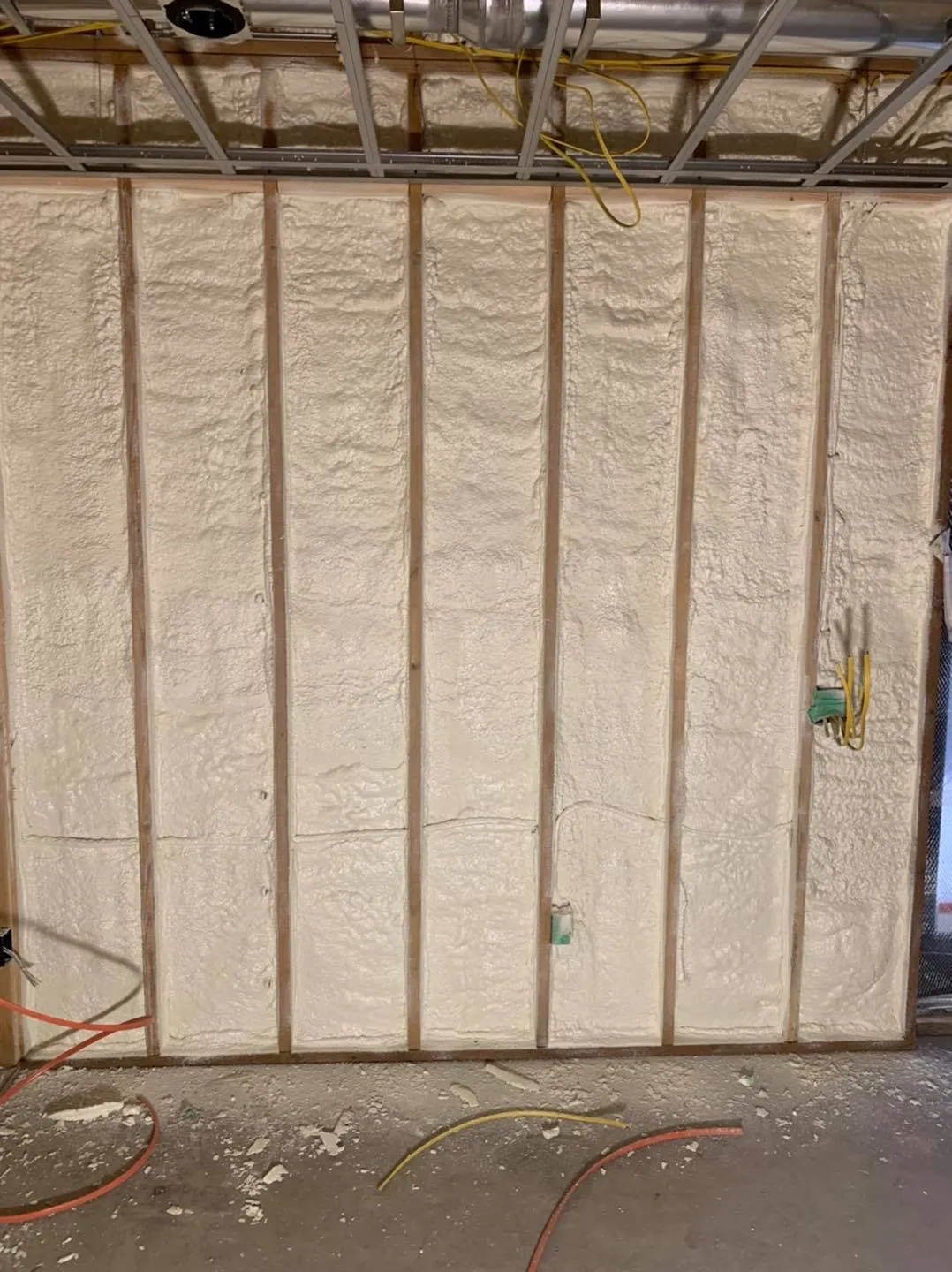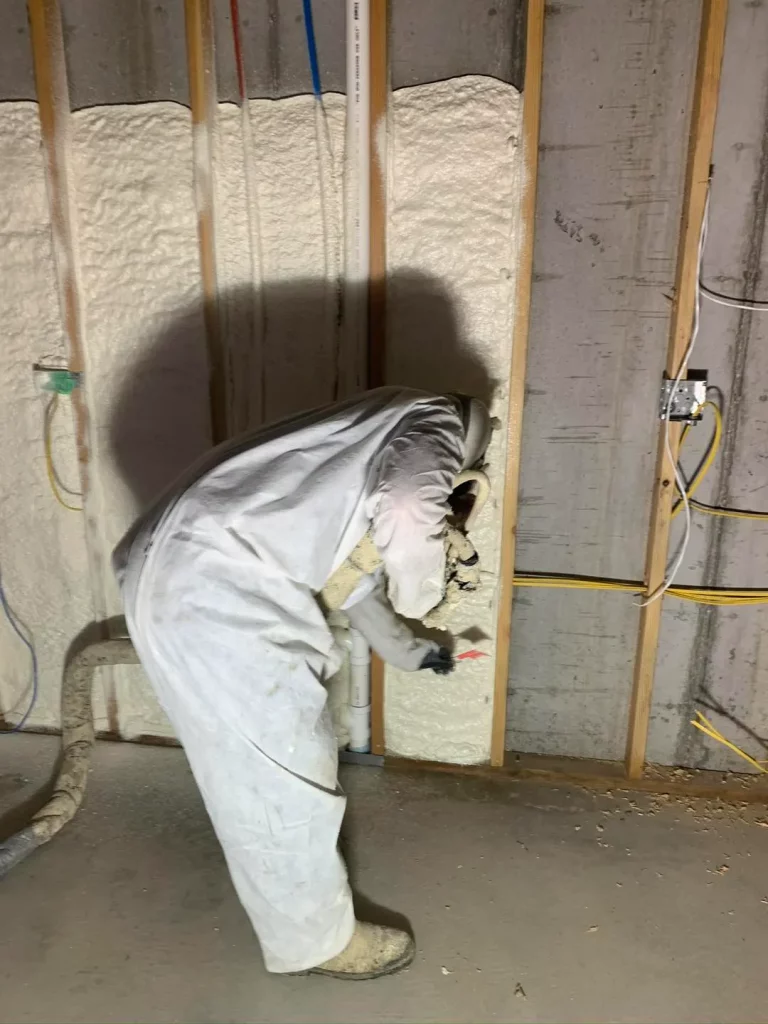
For property owners in Green River, Wyoming, air sealing is a direct and effective strategy for improving energy efficiency and indoor comfort. Uncontrolled air leakage through cracks, gaps, and hidden openings in a building’s envelope forces heating and cooling systems to work harder, leading to higher utility bills. Spray polyurethane foam, or spray foam, addresses this by creating a continuous, monolithic barrier that stops air movement. Unlike traditional insulation materials like fiberglass batts or cellulose, spray foam expands to fill every void, creating a durable and highly effective air seal.
This guide offers a detailed look at using spray foam for air sealing, covering the different types available, the most critical areas to treat in a typical property, and the long-term benefits. The information is based on extensive field experience in residential and commercial buildings, providing practical knowledge for making informed decisions. Proper air sealing is particularly important in our region, where cold winters and warm summers create a significant demand for climate control.
Spray foam insulation is not a one-size-fits-all product. It comes in two primary forms: open-cell and closed-cell. Each has distinct properties that make it suitable for different applications. Choosing the right one depends on the project’s goals, budget, and specific location within the building.
Closed-cell spray foam has a dense, rigid structure and provides a higher R-value per inch, making it an excellent insulator. Its low moisture permeability also allows it to function as a vapor barrier, which is useful in basements, crawl spaces, and on rim joists. Open-cell foam is lighter, more flexible, and has a sponge-like texture. While its R-value is lower, it is a superb air barrier and provides excellent sound dampening, making it a good choice for interior walls and unvented attic assemblies.
A report from the U.S. Department of Energy highlights that in addition to resisting heat flow, spray foam is effective at reducing air leakage. This dual function is what sets it apart from many other insulation types.
| Feature | Open-Cell Spray Foam | Closed-Cell Spray Foam |
|---|---|---|
| R-Value per Inch | Approx. 3.5 – 3.8 | Approx. 6.0 – 7.0 |
| Density | Low (0.5 lbs/cubic ft) | High (2.0 lbs/cubic ft) |
| Moisture Permeability | Permeable (not a vapor barrier) | Impermeable (acts as a vapor barrier) |
| Structure | Soft, flexible, sponge-like | Rigid, dense, strong |
| Common Uses | Attics, interior walls, soundproofing | Basements, crawl spaces, exterior walls, rim joists |
Identifying and sealing the most significant sources of air leakage provides the best return on investment. In most Green River homes and buildings, air infiltration is concentrated in a few predictable areas where different building materials meet.
Bonus Tip: A simple way to find major leaks is to conduct a basic building pressurization test on a windy day. Close all windows and doors, turn off combustion appliances, and turn on all exhaust fans (like bathroom and kitchen fans). This creates negative pressure, pulling air in through cracks. You can then feel for drafts or use a smoke pen to see where air is entering.
As the following diagram illustrates, these leaks often occur in predictable locations.

Before committing to a spray foam project, property owners should think through several factors to ensure the solution aligns with their goals and budget.
Bonus Tip: When vetting contractors, ask for proof of training and certification from organizations like the SPFA. Also, inquire about their safety plan and how they manage ventilation and site cleanup.
By air sealing a building, spray foam helps block the entry of outdoor pollutants, allergens like pollen and dust, and moisture. This creates a more controlled indoor environment where air quality can be better managed with a proper ventilation system.
Yes, spray foam is very suitable for retrofit projects. It can be applied in attics, crawl spaces, and rim joists of existing homes. For finished walls, a slow-rise injection foam can be used to fill empty stud cavities without requiring major demolition.
Effectively air sealing a property with spray foam is an investment in long-term comfort, energy efficiency, and building durability. By understanding the differences between open-cell and closed-cell foam and targeting the most common leakage areas, property owners can achieve substantial improvements. Before moving forward, it’s always best to evaluate your specific property’s condition and define clear goals for the project.
For a detailed assessment tailored to your property’s specific needs, professional guidance is recommended. An expert can help identify hidden air leaks and recommend the most effective sealing strategies. To discuss your project, you can get in touch with High Country Solutions by email at [email protected] or by phone at (307) 248-9063.
In most cases, it is best to remove old, underperforming insulation before applying spray foam. This ensures the foam can directly adhere to the substrate (like drywall or wood sheathing) to create a proper air seal. Leaving old insulation in place can trap moisture and prevent a continuous seal.
When installed correctly, spray foam is a very durable product. It does not sag, settle, or degrade over time like some other insulation materials. Its thermal and air-sealing properties should last for the life of the building.
Closed-cell spray foam acts as a vapor barrier, which helps manage moisture movement and can prevent condensation issues within building assemblies. Open-cell foam allows moisture vapor to pass through it, so its use must be paired with a separate vapor control strategy in colder climates like Green River’s.
The significant temperature swings between summer and winter in Green River put a heavy load on heating and cooling systems. Air leakage makes this problem worse, allowing expensive conditioned air to escape and unconditioned outside air to enter. A well-sealed building envelope is one of the most effective ways to manage energy costs in this climate.
A common concern is that a tightly sealed home won’t have enough fresh air. Modern building science addresses this with mechanical ventilation. After air sealing, a balanced ventilation system (like an HRV or ERV) can be used to introduce fresh, filtered air while exhausting stale air, giving you control over your indoor environment.